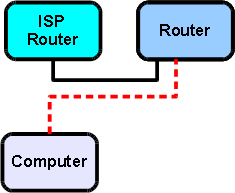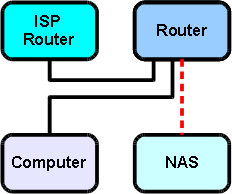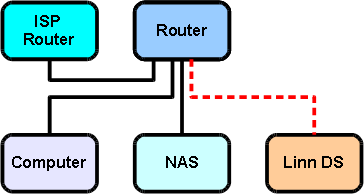DS Entry Level System
Contents
Introduction
This is a recommended guide to setting up an entry level DS system, requiring the customer to purchase some network components in order to build the recommended system. If they already own any of the required components then these can be used.
It is advisable to follow the instructions step by step to ensure that each part of the system is working before moving on to the next. By doing this, it simplifies the setup process and allows for any problems encountered to be more easily identified and resolved.
The following components are required for the system detailed in this page:
- Router with built in switch and DHCP server; it should also feature address reservation.
- If a wireless router is being used, n band WAP support is recommended
- NAS with media server software (Twonky or Asset UPnP) and RAID or backup support
- Home computer (control point)
- DS Player
- Network cables
Step 1: Connect computer to router
Connect the home computer to the router using a standard ethernet cable. The computer’s network adapter should be configured to ‘obtain an IP address automatically’. Configure the router to the recommended settings.
Step 2: Connect NAS to router
Connect the NAS to the router using a standard ethernet cable. Ensure the DHCP server is disabled on the NAS and configure the NAS to 'obtain an IP address automatically'.
Step 3: Connect DS to router
Connect the DS player to the router. The DS should automatically obtain its reserved IP address from the router. The system should now be connected as shown below.
Step 4: Install DS control software on computer
The latest releases of Konfig and Kinsky should be installed on the computer; these can be found here. Once Konfig has been used to configure the DS to the required settings the system should be up and running. It should now be possible to use Kinsky to play music throught the DS.
Step 5: Adding wireless control
If desired, a wireless access point can be added to the network to allow wireless control of the DS through a portable, wireless enabled control point (such as a laptop, mobile phone, etc.).



